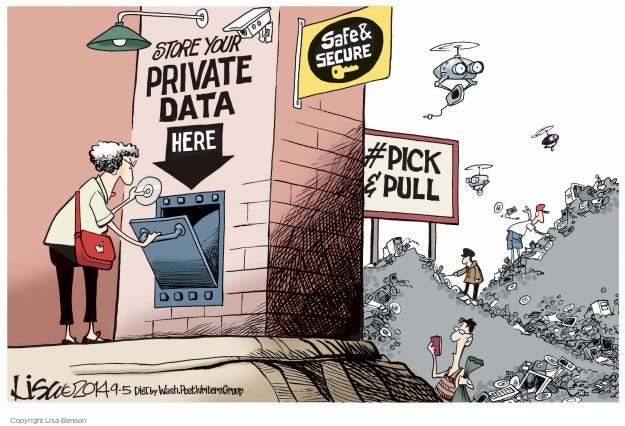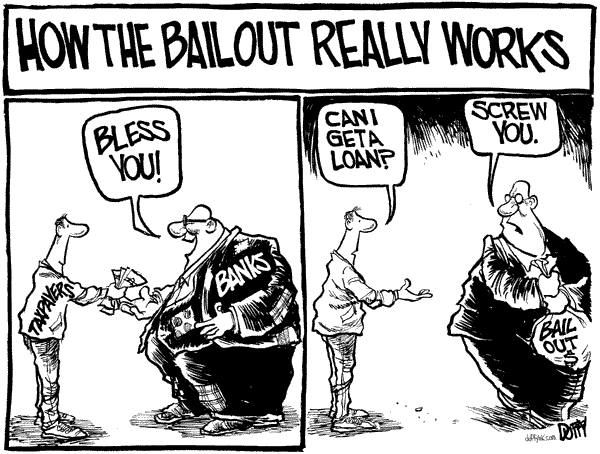Money, Meaning and Bitcoin. Bitcoin Tech Talk Issue #184
We’re in an extraordinary time. Not only is there a global emergency, but there’s many trillions of dollars worth of fiat currency being printed all around the world. Many people, ordinary people that previously never inquired much about money, are starting to ask questions about the nature of money itself. What is it? How does it work? How is it possible for the governments around the world to print so much? Why are we paying taxes at all if they can just print money?

These questions have obvious answers to those of us that have been in this space for a while, but for most people around the world, they’re just starting to realize that there’s more to money than meets the eye. Jared Dillan of Bloomberg has written a thought-provoking article for those asking such questions. The article explores money a bit more deeply than articles on mainstream press normally would and points out rightly that store of value is the most important property of money. Sadly, the author of the article doesn’t seem to have made the connection with Bitcoin just yet.
All that is to say that these are the exact questions that lead people to Bitcoin. It’s not a coincidence that Bitcoin exchanges had a very good March. It’s only a matter of time before a new class of adopters comes into the fold and given the halvening in about 3 weeks, everything is setting up for another bull run.
Bitcoin
Bryan Bishop has created a Bitcoin vault on Github. A Bitcoin vault has the nice property of allowing some period of being able to reverse or claw back the initial transaction out of it. This is not new, but previous proposals for vaults required some sort of soft fork of Bitcoin. Bryan’s scheme, which Bryan’s been exploring since 2019, does not require one. It’s an interesting idea and one that can potentially be very useful for custody solutions.

Blockstream and BTCPay have announced P2EP (Pay to endpoint), which is a coinjoin solution for normal payments. Most coinjoins have lots of inputs and lots of outputs, creating an obvious target to de-anonymize. What makes P2EP interesting is that the recipient adds an input as well, creating what looks like a single payment, essentially creating a false trail for chain analysis. It’s a very clever mechanism, and one that’s now going to be a part of BTCPay. The main downside is that the recipient has to be online and sign the transaction, which limits it to certain types of transactions, but is ideal for merchants since they’re online anyway.
Ministry of Nodes has an excellent article on why static donation addresses are terrible. It makes the very good point that not only are you compromising your privacy, but also of anyone known to have donated to you. PayNyms and BTCPay are the solutions suggested. In general, the infrastructure for receiving donations really needs to be more privacy conscious and easy to use. I’m glad they’re pushing things towards that direction.
Economics, Engineering, Etc
Jameson Lopp has an interesting personal anecdote in regards to bitcoin substitutes, well worth reading. Essentially, he traded in GBTC for another BTC ETN from Sweden, which was shortly suspended by the SEC. This, in turn, forced some serious inconvenience and close to a very bad fat-finger trade from the international desk at his brokerage.

FSB (Financial Stability Board) issued a statement about stablecoins and how they should be regulated. The memo recommends that jurisdictions should be enforcing the same regulations to stablecoins as other similar financial entities, which necessarily may mean banning them if they don’t have the right licenses or are illicit in those places. The outrage from altcoiners is nevertheless pretty amusing, given that they rightfully see this as a threat to their very existence. They are, after all, centralized and regulation would pretty much kill all of them off. Bitcoin, being decentralized has no target for regulation and hence I look on with bemusement.
Speaking of stablecoins, it looks like Libra is heading that way. Their new plan is to be a substitute for a given central bank currency. It would seem they could absolutely crush every other stablecoin given their insane reach. Their plans to be the WeChat for the world, however, seem to be on hold until the regulatory environment clears up.

Another week, another DeFi smart contract failure. This time, the poorly written contract was something called dForce, which apparently copied the code from another poorly written smart contract called Uniswap which was known to have this vulnerability. The attack was worth $25M and occurs a mere 5 days after the announcement of Multicoin Capital’s $1.5M investment. At some point, these situations are going to become big enough that another ETH bailout a la DAO will have to happen.
Purse is shutting down. This was a service that allowed purchase of goods from Amazon for a discount if using Bitcoin. The business model relied on a lot of unused Amazon gift cards, particularly in foreign countries to provide the discounts. Unfortunately, they started accepting BCH and spent valuable resources in integrating low-revenue features. It’s hard to know if that’s what caused their downfall (AML/KYC compliance, Amazon closing some critical loophole or badly managed engineering resources), but it looks like the economics no longer work for them.

After the $0 liquidations on March 12, MakerDAO is predictably getting sued. This was, of course, inevitable, given that their “decentralized” platform has a central entity that can modify the smart contracts as needed. The vulnerabilities of these systems couldn’t be clearer. If there’s a single point of failure, it will be tested. Every altcoin, if there’s enough money at stake, will go through the same thing.
It looks like the famed XRP Army is much, much smaller according to this tweet from AztecBTC. According to his research, something like 65% of the XRP interest, at least measured by the telegram group, is gone. The disinterest in Ripple since its peak 2.5 years ago seems par for the course. It’s of note that Tiffany Hayden apparently is no longer supporting the currency. One gets the feeling that perhaps some budget somewhere was cut. It also looks like interest in LTC has also decreased dramatically, which may be the aftermath of their halving in 2019.

Podcasts, etc.
My show last week was about Bitcoin and the Cypherpunks history. I also finished reading and commenting on Nick Szabo’s Shelling Out.
If you have friends or relatives asking questions, my books are available!
Fiat delenda est.


What always surprises me is the ignorance of the bitcoin maximalist about banking and the ignorance of the bankers of blockchain. The fact is more complex than meets the eye in effect the modern world revolves around the securitization of credit derivatives (as per latin drawn from) into many financial instruments that enable consumer credit forms allowing the expansion of our economy and industry creating jobs for people from the expansion of credit contracts. The modern banking model is based on a decimal model hence the banks used to be able to leverage (read multiple) the unit 10X with one tenth in reserve. As you expand the base from the transactions and business book the revenues the monetary supply grows to represent the future value of the contracts booked (owed) to the on the chain of contracts. So in effect the credit lending based on crypto that many bitcoin maximalist are peddling is not different and in fact much more risky than a CLO from Lehman Brothers based on subprime credit. Maybe just maybe some of you guys should take the time to learn more about the way the world works and how banking is not evil but a way for the free market to create and multiple opportunities. Can it be toxic you betcha, can humans of all kinds make mistakes you betcha, but calling bankers bad while you guys charge fees and interest that make Goldman envious is just disingenuous.